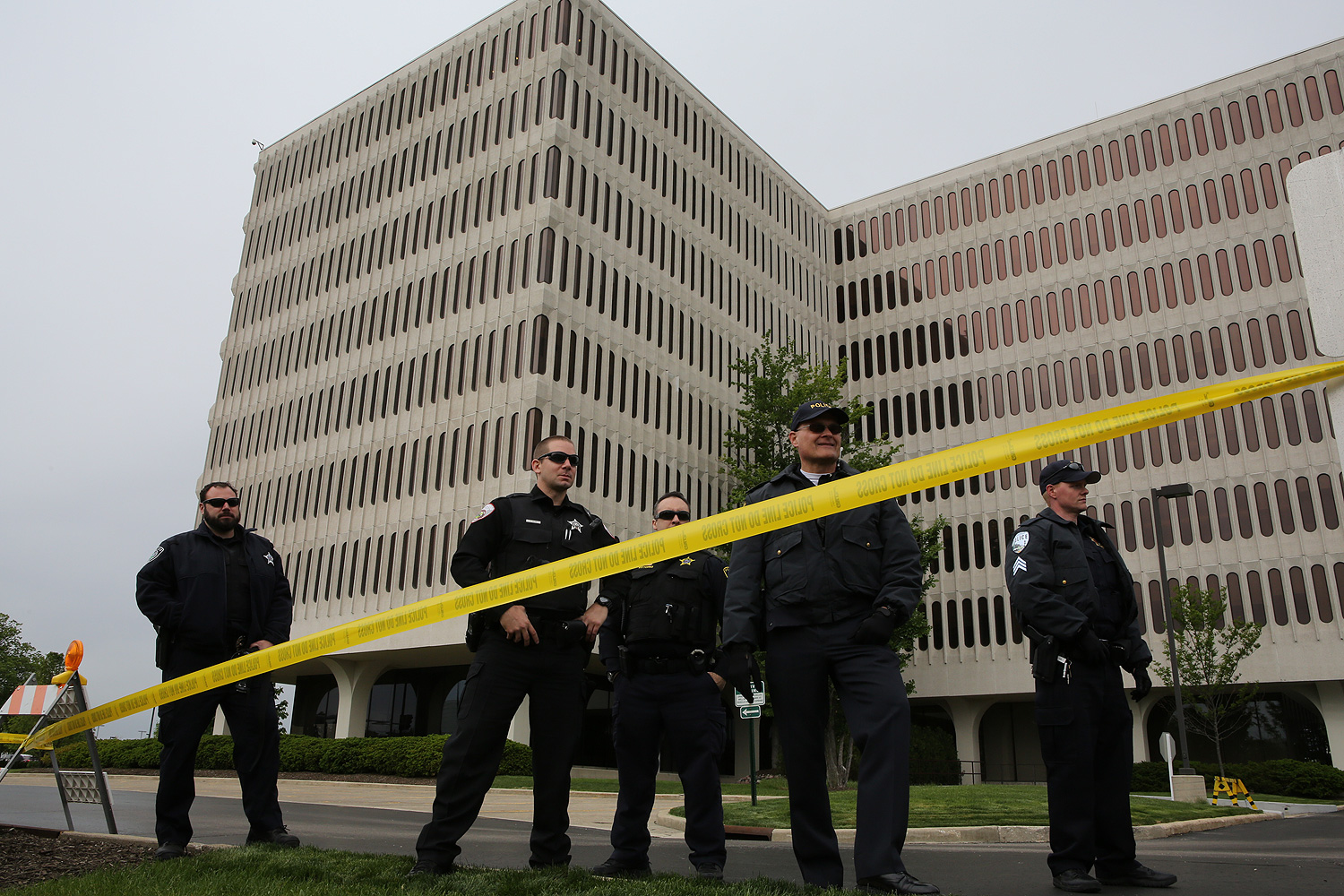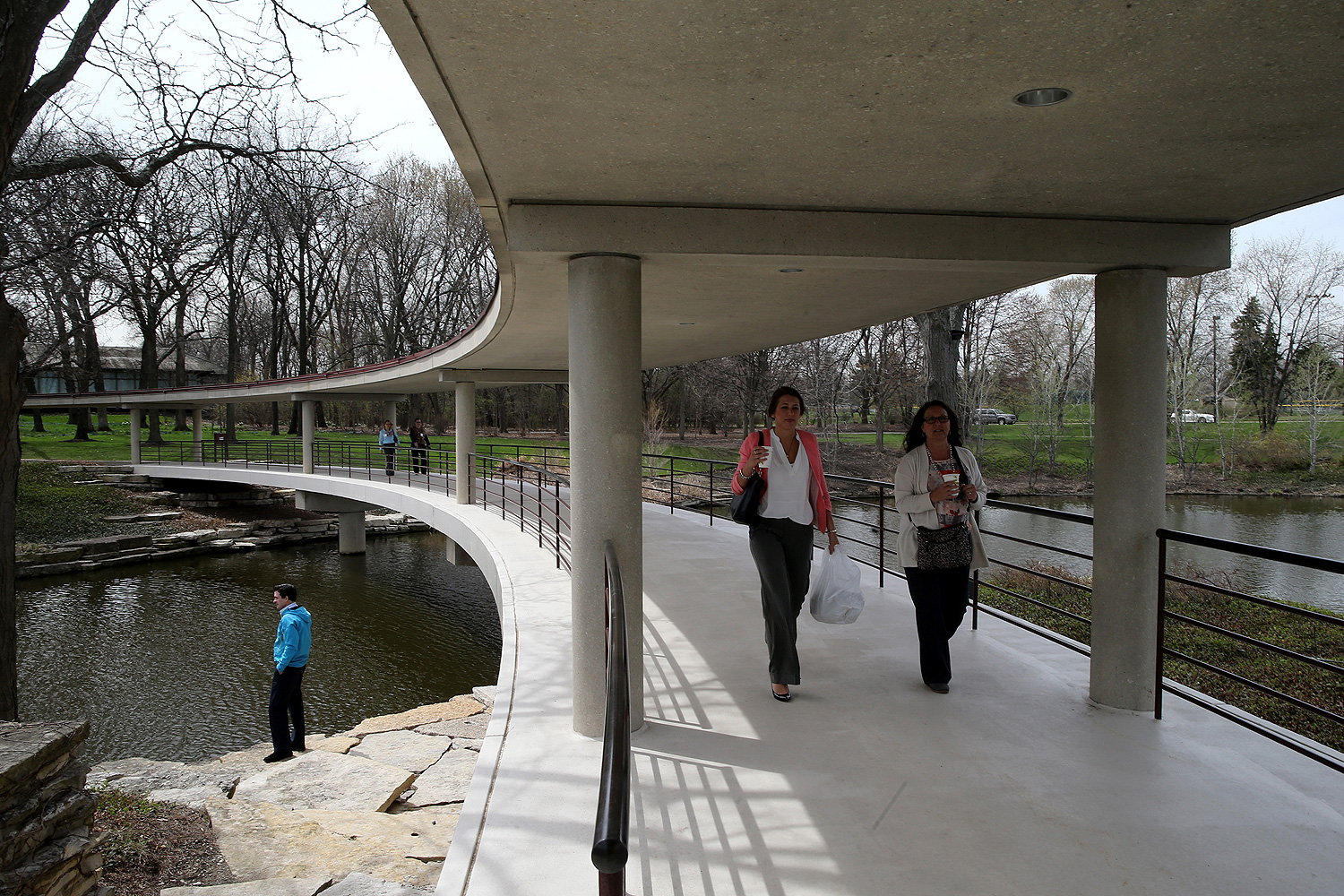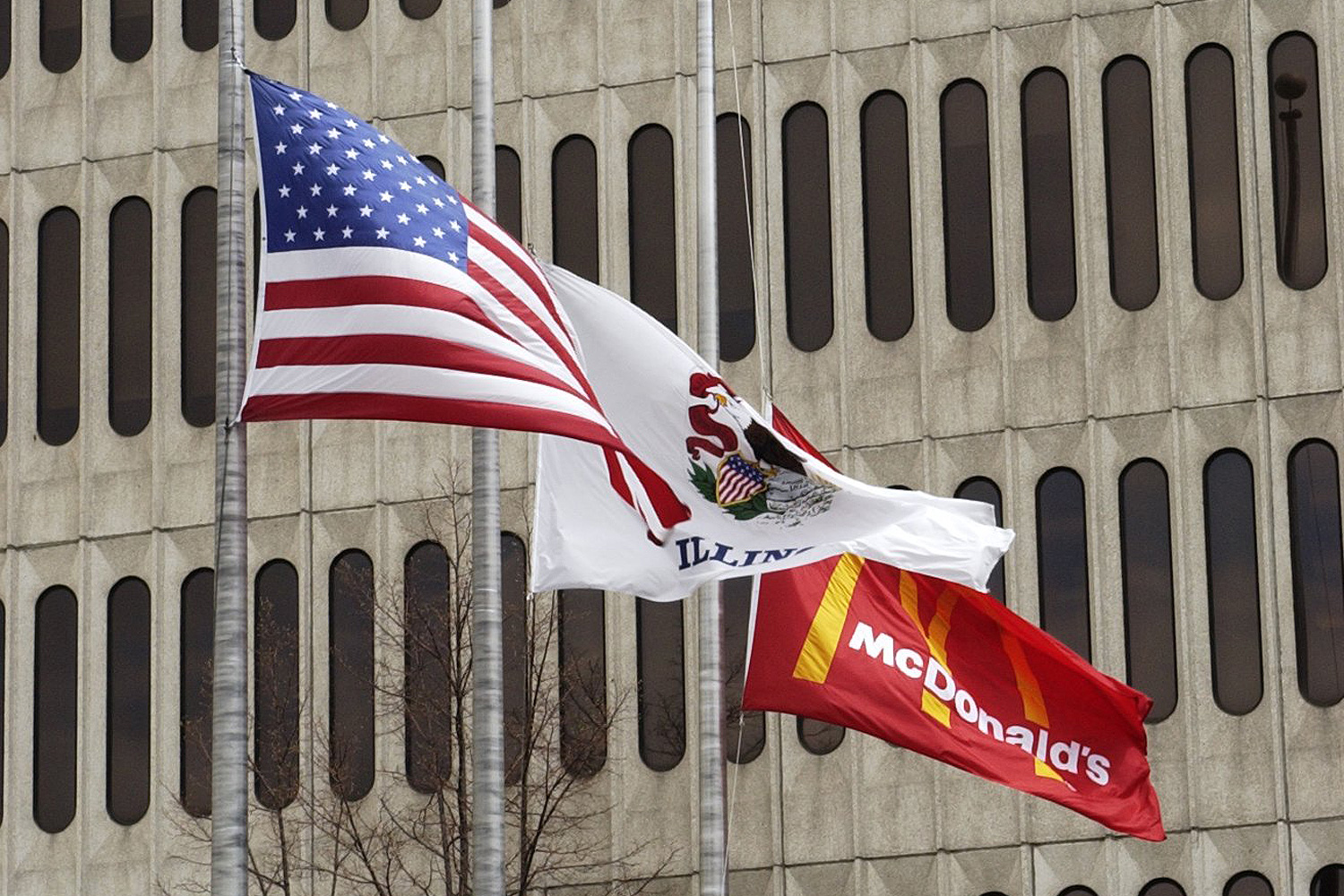A couple weeks ago I was driving out to the Morton Arboretum, through the corporate prairies of the western suburbs, and noticed a handsome old Brutalist building, an imposing concrete-and-glass structure softened by a grid of narrow oval windows and floating above the ground on curved pillars.
It was McDonald's corporate headquarters, but it won't be for long. A few days later, news broke that the company was abandoning it and following a stream of HQs back to the city. By 2018 the company will move into the old Harpo Studios site in the Near West Side, in the middle of one of Chicago's best restaurant districts. It's another big get for the city from its suburbs, following moves by Motorola, Kraft Heinz, ConAgra, and others.
This wasn't the more famous McDonald's campus nearby, designed by Dirk Lohan, but the company's first stake in suburbia, designed by the lesser-known Salvatore Balsamo & Associates. (Balsamo has a couple more buildings of note in the area: the Kingdom Hall of Jehovah's Witnesses in Northbrook, a "tiny confection rendered in Brutalist language," and his space-age stone-and-concrete house in Park Ridge.)
Today the building seems conservative, a businesslike combination of Bertrand Goldberg and Mies van der Rohe. When it was built in 1972, though, it was totally wild, thanks to its pathbreaking interior designer: William Pulgram, a Vienna-born Holocaust survivor who went to Georgia Tech on the G.I. Bill, and his Atlanta-based firm, Associated Space Design. It lives on as the firm ASD SKY, which is still doing cutting-edge work for new-economy companies like Mailchimp, Dropbox, and the Alibaba Group.
Pulgram designed a near-total open office, without doors, for the company. "Even the executive offices in the eight-story building will be work stations separated on two sides by free standing modular units with built-in desks," the Tribune reported in 1970. He called these "task response modules," arranged into "work units." Founder and chairman Ray Kroc had his own executive-sized corner TRM, but no door.

But Pulgram's design, bureaucratic language aside, was not a submission to gray-suited, scientific middle-management homogeneity. Much as people like to rag on the trappings of the contemporary tech sector—scooters, foosball, kegerators—the centerpiece of Pulgram's design was a "think tank" that, well… here's how the Tribune described it in 1972:
Turning a sharp corner, the visitors came upon an open area dominated by what seemed to be a throne. A brown suede blob of a chair waited invitingly beneath a muted halo of yellow light…. This room was but prelude to the real "think tank," though….
And then the big reveal.
Pulgram pressed a button recessed in the wall and a hidden door slid open to reveal what looked at first to be a small arena…. Then the visitors clambered up a couple steps and plunged into the arena floor—a waterbed!
At the center of this fast-food giant's Brutalist block was a swingin' bachelor pad.
Pulgram jiggled beside a control panel which could adjust the lighting, turn on an FM radio, or play a tape recording of "Burt Kaempfert's Greatest Hits." The slanting burgundy suede walls contained a circle of high-fidelity speakers.
Aw, yeah. (If you're thinking what I'm thinking, that occurred to them too: "Couples of the opposite sex have not been encouraged to communicate here, however.")
But wait, it gets even more '70s.
It is equipped with an alpha pacer, a machine that monitors brain waves and projects them on a screen. The user learns to control his state of mind until the monitor shows his brain emanating alpha waves—said to be the ideal creative state.
The man who planned the move explained the intention in the patter of the era and the cold hard numbers.
Like a good number of McDonald's employees these days, [Tom] Watterson sports the "with-it" plumage of the liberated male, in his case a mustache, gray and violet textured suit, and shiny black boots. "We've tried to develop a total-concept environment here, from the landscaping right down to the last piece of furniture," Watterson explained. "We want it all to make the statement that McDonald's is an open company that believes in growth, change, dynamics…."
Watterson was also pleased to note a marked decline in turnover, which he said was 100 percent every two years when McDonald's was downtown but now seems headed for a level of 25 to 30 percent. "Some jobs would turn over four or five times in the course of a year," he said. "In the Loop, it's that way—girls would shop jobs for a matter of $5 a week. And people are dressing very colorfully out here. They seem to be in a pleasant frame of mind. There's not so much bitchiness any more."
That last quote is subtle but important. In a dense urban environment, workers from different companies can mix over lunch or after work; that can lead to new job opportunities; and as the quote implies, that can lead to upwards wage pressure.
Louise Mozingo, a professor at Berkeley's department of landscape architecture and environmental planning, studied the history of suburban corporate campuses like McDonald's and John Deere's epic, Saarinen-designed campus in Moline. In a long piece for Collectors Weekly about her work, she explained to Hunter Oatman-Stanford how the elaborate amenities of the luxurious corporate campus ("snack bars, ping-pong tables, shuffleboards, bowling alleys, tennis courts, horseshoe pits") were meant to save money by controlling labor:
“They were terrified that female clerical workers were going to unionize,” Mozingo says, “In the era before computing, companies ran on vast amounts of paper, and that paperwork was almost all done by women. That was one of the reasons they wanted to get out of downtown—if the secretaries unionized, they’d all be sunk.”
Even the shift to personal vehicles rather than public transit was hailed as a perk: Private cars were supposedly more reliable and allowed for more flexible work schedules, particularly in an era before highways were clogged with traffic. In actuality, this encouraged employees to extend their workday past the standard hours of nine-to-five, and helped isolated workers to ensure company loyalty. “This is something that Silicon Valley companies still do—they capture the employee for the entire day,” Mozingo says. “The descriptions were extremely explicit about this, about solidifying corporate culture, instilling loyalty, and minimizing happenstance meetings with people from other companies who might steal you. It’s about making the corporation your entire life.”
At the other end of the wage scale were the highly trained workers who made up the R&D departments of the huge companies. As Mozingo points out, many of those workers would otherwise end up at universities, so the corporate-campus model was, in some ways, meant to imitate the sylvan academic-campus feel—what Mozingo calls "pastoral capitalism." Dirk Lohan, who designed the company's campus complex in 1979, echoed this in a recent Trib interview: "As an architect I spent a considerable amount of time thinking about how to make people happy and how to make people better performers. We thought trees and deer are better than dirty streets in the city."

But the isolation of the suburban corporate campus is a defensive strategy. Isolating employees in order to prevent their poaching means being isolated from poaching others' employees—or just the inevitable circulation of ideas when industry peers meet informally. AnnaLee Saxenian's study of why Silicon Valley thrived and Boston's Route 128 tech cluster failed resonates with the geography of the suburban corporate campus:
Motorists, she said, can see the difference from their car windows: Beautiful lakes and forests separate Route 128 companies from each other. The snarled freeways of the narrow San Francisco Peninsula provide no similar beauty, she said, but geography has helped to keep Silicon Valley firms from isolating themselves.
"One of the most obvious differences is in labor market behavior and the attitude toward risk taking," she said. "Engineers in Silicon Valley boast that they can change jobs without changing carpools. People change jobs with great frequency there. On Route 128, by contrast, the normal career path is to find a job in a large company and work one's way up the corporate ladder. It was rare for one to leave a corporate job to work for a startup, while in Silicon Valley, it is almost glorified. The point is that a tremendous amount of learning occurs through this process of entrepreneurship and even through failure."
A number of people have noted the irony of the burger barons moving to the Near West Side near Fulton Street, an old industrial-food corridor once home to the city's meatpacking giants that's transformed into a fine-food cluster. The Girl & the Goat, Little Goat, Au Cheval, Momotaro, Nellcote, the Aviary, and Maude's Liquor Bar are all within a ten-minute walk.
At McDonald's current HQ? There are a couple steakhouses.
The company, which has been struggling to compete with more upscale fast-casual restaurants, is placing itself in the middle of a giant, fluid food lab that's driving food trends within one of the country's most important food cities.
Could it work? Well, many years ago the company's founder, Ray Kroc, was a regular at the Whitehall Club, a ritzy members-only club within the old Whitehall Hotel in the Gold Coast. In the late 1960s, Kroc began his efforts to poach its executive chef. In 1976, Arend finally left his gourmet world to make billions of burgers—and to invent the McRib.




